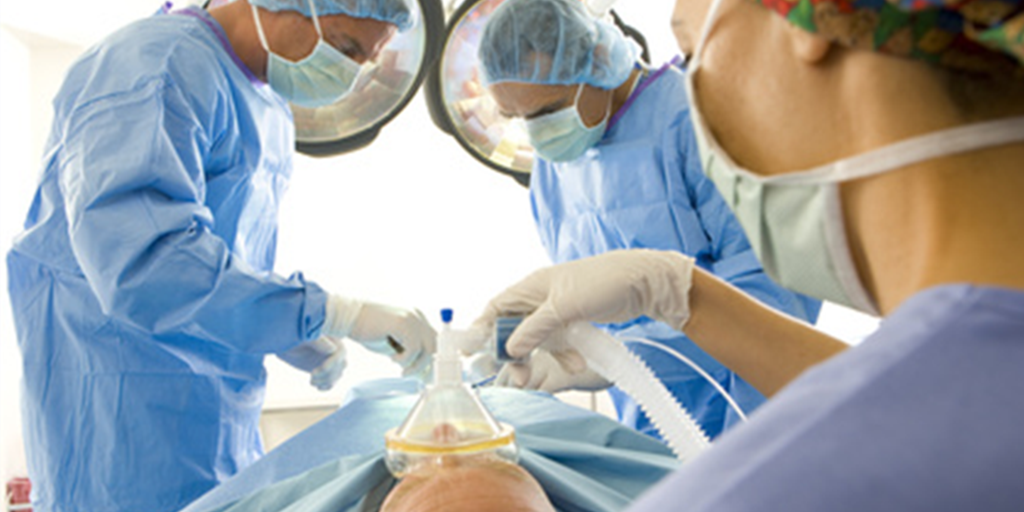
A properly maintained waste gas disposal system is essential to any anesthesia system. However, even facilities that already have a waste anesthesia vacuum disposal (WAGD) system in place may not realize the importance of implementing a preventative maintenance plan to keep the system operating at peak efficiency.
Questions that we often encounter when discussing anesthesia systems with facility managers are:
- What is a WAGD system?
- Which WAGD system is the best fit for your healthcare facility?
- How does it keep the work surroundings free of unwanted anesthesia gas and protect patients and staff?
- What does a WAGD maintenance plan look like?
This article will cover these questions, and more, to give you a better understanding of your medical gas system.
Are You Struggling With Medical Gas Compliance?
CHT offers medical gas services to help you reach your compliance goals. To help you navigate through these challenges, start with a free 30-minute discovery call.

What is a Waste Anesthetic Gas Disposal (WAGD) System?
A WAGD system pulls waste anesthetic gas out of the operating theater and pumps it outside. Gases, such as nitrous oxide, halothane, and isoflurane, are used to put patients to “sleep.” These gases are exhaled by patients into the operating room and pose risks to providers if not removed. Removing anesthetic gases can be accomplished in a couple of different ways.
The safest method involves using a special set of vacuum pumps to actively pull the waste anesthesia gas out of the operating room.
Another method relies on negative pressure from a universal medical vacuum system to accomplish the same task. This method has become very popular, as it allows for a more straightforward installation because it requires fewer lines and pumps.
Ultimately, the purpose of the WAGD system should always be to ensure that gas is making its way safely outside without getting trapped in any part of the anesthetic gas system, maximizing the safety of the physicians and patients as well as securing the OR.
Why You Need to Perform Maintenance on Your WAGD System
Having a WAGD system is critical to keep patients and staff safe. Gases that linger in or around the anesthesia system will eventually build up and can cause problems.
One of the most common problems is a slow leak of gas into the facility's atmosphere. It may not be noticeable in the short term, but long-term and repeated exposure to the buildup of anesthesia gas is hazardous to surgical staff.
In addition, fires and explosions at the source have been reported in some cases where the waste gas builds up and finds an open spark.
Which System Should You Use?
Depending on the other types of medical gases used in your facility, you may or may not be able to use a WAGD system that works using your existing vacuum lines. There has been some concern over the mixing of gases in these combined gas lines, as well as the occurrence of flash fires when the mixed gases reach the vacuum pump.
However, this is still the most cost-effective means of disposing of anesthetic gas because the installation uses only one set of vacuum pumps. If there is no separate WAGD system, the oxygen content of the effluent must be closely monitored.
Per NFPA 99, 2012 edition, WAGD source equipment shall be chosen in consultation with the medical staff having knowledge of the requirements to determine the type of system, number and placement of terminals, and other required safety and operating devices. (source)
In a healthcare setting, commonly used WAGD producer technologies for establishing this type of gas disposal are:
- Vacuum Pumps - For example, Claw, Oil-Less Rotary, and Liquid Ring
- Regenerative Blowers
Above all, vacuum pumps must be compatible with oxygen.
Related Content: What makes a pump "Sensitive to Oxygen" or "Suitable" for use with WAGD?
Characteristics of an Ideal WAGD System
- The system is active and moves the waste down the line. (NFPA uses the term "producer.")
- This "producer" is oxygen inert. “Inert” means unlikely to react with other substances.
- Operates at a low vacuum level.
- Has a high flow.
WAGD Maintenance Plans
A WAGD system is only as good as its maintenance program. There are many potential points of failure in a disposal system.
To properly maintain the system, you must first verify that the pressure and volume of gas drawn into the line are correct. A pressure that is too low can indicate that the gas is not making its way outside, and there may be a blockage or obstruction in the system or a failing pump.
This is what leads to fires and explosions at the pump. Another issue can be when high levels of oxygen are used to revive patients from the anesthesia cart after surgery is complete. That oxygen makes its way down to the vacuum pump and mixes with oil at high temperatures to create a fire.
Combined WAGD and general vacuum systems include a series of gravity traps or filters. These traps separate the harmful particles and liquids in the vacuum gas stream before the waste gas reaches the pump so that the exhausted gases are safe to release. If gravity traps or filters are not emptied and kept clean, you run the risk of having a fouled pump due to buildup.
In addition to inspecting the mechanical and electrical interconnections, operating specifications, and alarms, inspectors need to examine the exhaust end of the vacuum pump to ensure that it is screened, clear of any air intakes, and away from regular human traffic. This needs to be verified at each inspection point to ensure that nothing is blocking the exhaust on the exterior of the building.
Conclusion
Using a comprehensive WAGD maintenance plan is the best way to keep all components of your medical gas working properly and ensure providers' and patients' safety. Proper maintenance will provide better service life from all components within the system and reduce the risk of exposure to harmful waste gas through leaks and fires.
If you have any questions about the efficacy or code compliance of your WAGD, CHT offers medical gas services to help you reach your compliance goals. To help you navigate through these challenges, we offer a free 30-minute discovery call.
photo credit: Surgery face mask



